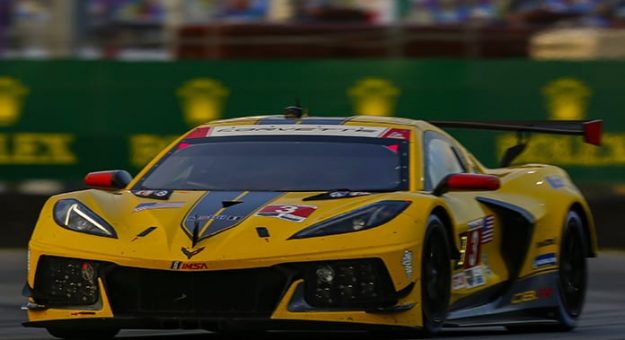A.J. Allmendinger, a noted road-course driver for more than two decades, also competed in the Rolex 24 At Daytona.
Now that he will be full time behind the wheel in the NASCAR Xfinity Series and could run some Cup Series events for Kaulig Racing, he’s taking what he knows and improving on it.
“There’s not a lot you can take from the Rolex 24 to the Cup race, or the Xfinity Series,” Allmendinger said. “They are such different cars to drive compared to an Xfinity or Cup car on a road course. Laps, no matter what kind of car you’re in, to get you ready for the season are important. You can learn from it, even if it doesn’t truly help you in the NASCAR side of it. It just makes you a better driver. The more things you can drive and get used to and have speed in, the better it makes you all-around as a driver.”
One of the road-course “ringers,” Andy Lally, is a sports car racing veteran and he says despite the fact that road racing isn’t the name of the NASCAR game, its drivers are more than capable on the twisty circuits.
“To be honest, I don’t think enough people understand how good these NASCAR teams are and how they understand how even one race can make a season.” Lally said. “We’ve had three or four road-course races in a season, and now upping it to seven … it’s just par for the course. They (the teams) are probably going to build another car.
“The focus on road-course racing has gone up tremendously,” he continued. “Boris Said and Ron Fellows in the past have been able to get into less-than-A-plus cars and do an A-plus job. At the Cup level, these guys know how to drive road courses. They’re really strong and really quick. Some of them do their homework and come to the Rolex 24 to try to learn, like Kyle Busch last year, Chase Elliott this year, Jimmie Johnson and Jeff Gordon in the past.
“They want to get comfortable behind the wheel, they find a way to do it and they pick it up really quickly.”
Such has usually been the case in NASCAR, with the history of Riverside playing a big role in that. The season sometimes started at Riverside and finished there, placing critical importance on scoring points. The point system was designed differently than the current one, placing emphasis on finishing well over the long stretch.

There were no playoffs then. Dale Earnhardt, Darrell Waltrip, the Allisons and others ran well at Riverside. Ringers such as Dan Gurney and Parnelli Jones also ran well at Riverside and won on several occasions.
The new emphasis on road courses also buys into the type of racing that occurs on them in the heavy NASCAR machines. Of all the exciting races during a typical Cup Series season, at least one road-course event was among them.
Battles like the ones that occurred among Marcos Ambrose, Kyle Busch and Brad Keselowski at Watkins Glen, with oil on the track and the white flag in the air, are ensconced in the annals of NASCAR history.
Likewise, the season-determining races at Riverside have their place in it.
With seven road-course events on the schedule, it will be interesting to see the role those races play in determining the champion. Strategically placed throughout the schedule, there are many more opportunities for classics to be born.
That’s good for TV numbers, buzz and compelling stories, which in the age of a diluted market is smart business. As NASCAR trends toward its Next Gen race car in 2022, the schedule sets up nicely to take advantage of the new car’s strengths.
It also manages to swing toward a different group of race fans, raised on racing video games and the like.
Changing the schedule now to include more road courses is a solid step toward setting NASCAR on a path to compete globally for many years.
The bulk of the schedule is still on ovals, but seven road-course races bring a different dynamic within the same framework NASCAR has relied on for more than 70 years.
